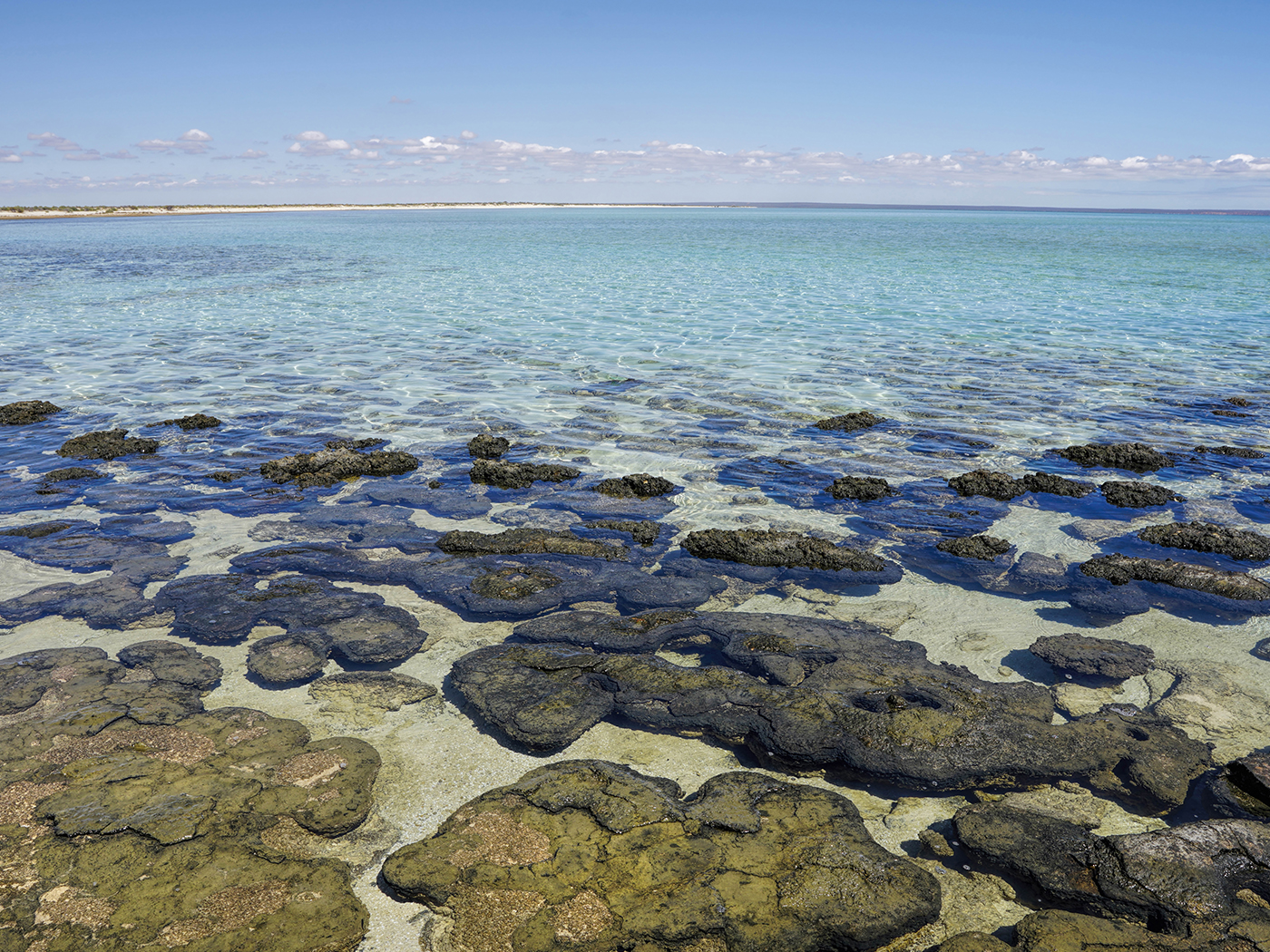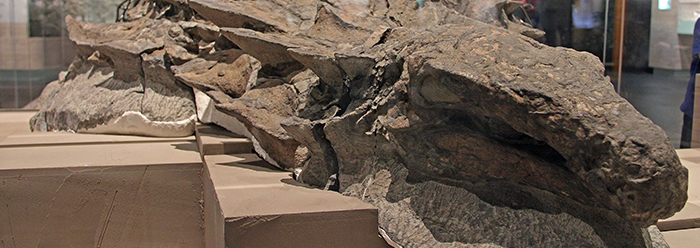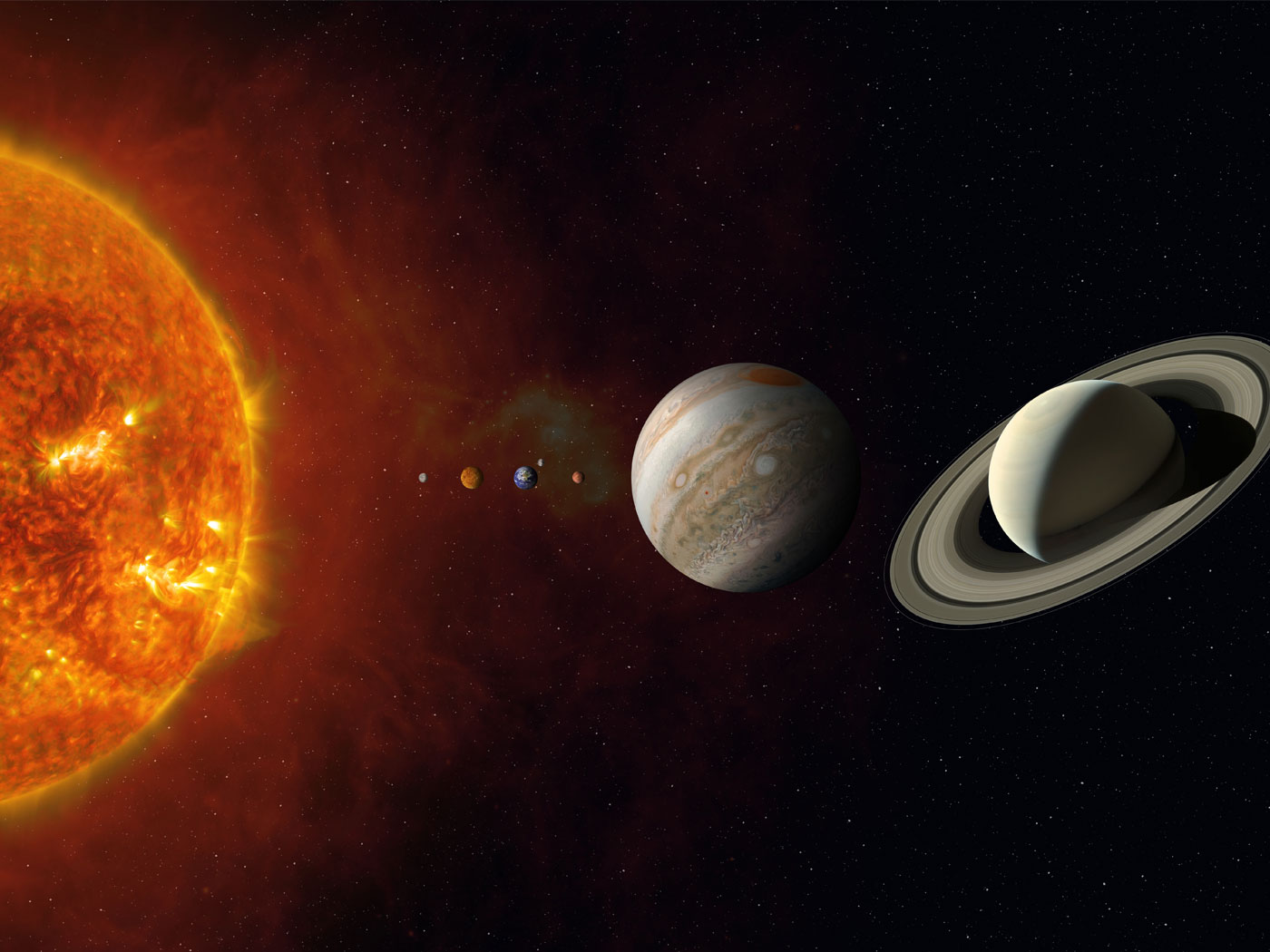Mosasaur fossils have been recovered from Late Cretaceous rocks all over the world. Most are just a fossilized tooth or perhaps a loose rib or vertebra. Occasionally, several bones are discovered still together. Conventional wisdom holds that creatures from this period died millions of year ago. If that's true, why do some still have soft tissue?
The best preserved mosasaur remains, found in Kansas, have been kept in a California museum for over 40 years. So much of the original mosasaur body remained intact that a recent study was able to glean unique insights into mosasaur swimming abilities, as well as details about its skin, eyes, and possibly its internal organs.
Paleontologist Luis Chiappe led a team of scientists in examining the unique specimen housed at the Dinosaur Institute of the Natural History Museum of Los Angeles County. In a study published online in PLoS ONE, the researchers analyzed purple residue in the eyeball area of the mosasaur skull and concluded that it "may represent remnants of the retina."1
They verified that the residue was original soft tissue from a mosasaur eye when they found microscopic pigment-filled structures called melanosomes, which serve to reduce light scattering. Found also in modern eyes, including those of humans, the darkly pigmented area in the back of the eye is familiar to anatomy students from eyeball dissections.
But soft tissues, like this retinal tissue residue, are known to decompose quickly in laboratory conditions. If this mosasaur was deposited "80 million years" ago,1 why did its soft tissue remnants remain soft? The obvious implication of a more recent deposition went unreported.
Some might counter the statement that the melanosomes represent soft tissue by claiming that the tiny, darkly colored oblong structures were bacteria that may have arrived long after the fossil formed. The research refutes this possibility for a number of reasons. First, bacteria would have grown on the outside of the fossil and the melanosomes were located deep inside. Second, bacteria would have grown all over--on the skin, in the preserved stomach contents, and in the internal organ remains. But the melanosomes were found only in the eyes. Third, their microscopic shapes matched those of melanosomes, not bacteria.
And these soft-tissue melanosomes are not the first to be found in fossils. Researchers have found them in fossilized feathers, as well.2,3,4
Also found among the "exceptionally preserved soft tissue" were interesting dark red patches in the chest cavity.1 To find out what chemical stained the rocks red, the investigators submitted samples for chemical analysis--and the result was spectacular. They identified "hemoglobin decomposition products."1 Hemoglobin is a major chemical constituent of blood, and biochemists know that it breaks down fast.
The researchers corroborated that the red color came from broken-down blood when they examined the positioning of the heart and liver within living ocean creatures. In dolphins and whales, these organs--as well as the lungs--are situated near the head to give them a streamlined shape. One of the dark red patches in the mosasaur was right where a dolphin's heart would be located. It appears that these two blood-rich organs did not completely decay.
Despite the amazing find of the mosasaur's purple retinal and still-red blood tissues, "the most remarkable features of [this fossil] are the preservation of skin structures from all parts of the body."1 The researchers were able to describe in detail the scale sizes and shapes almost from head to tail. Many of the small scales retained their three-dimensional shapes.
So, considering its "wide range of soft tissue structures,"1 including skin, eyeball tissue, and blood-stained organ patches, it is highly unlikely that this mosasaur is even thousands of years old, since these tissues decay so quickly. Therefore, insisting that they are over 80 million years old defies all reason.
References
- Lindgren J. et al. 2010. Convergent Evolution in Aquatic Tetrapods: Insights from an Exceptional Fossil Mosasaur. PloS ONE. 5 (8): e11998.
- Thomas, B. Fossil Feathers Convey Color. ICR News. Posted on icr.org July 21, 2008, accessed August 17, 2010.
- Thomas, B. Fresh Fossil Feather Nanostructures. ICR News. Posted on icr.org September 16, 2009, accessed August 17, 2010.
- Thomas, B. Feathered Dinosaur Debate Exhibits Young Earth Evidence. ICR News. Posted on icr.org February 8, 2010, accessed August 17, 2010.
Image credit: Copyright: © 2010 Lindgren et al, PloS ONE 5 (8): e11998.
* Mr. Thomas is Science Writer at the Institute for Creation Research.
Article posted on August 20, 2010.







.jpg)
















